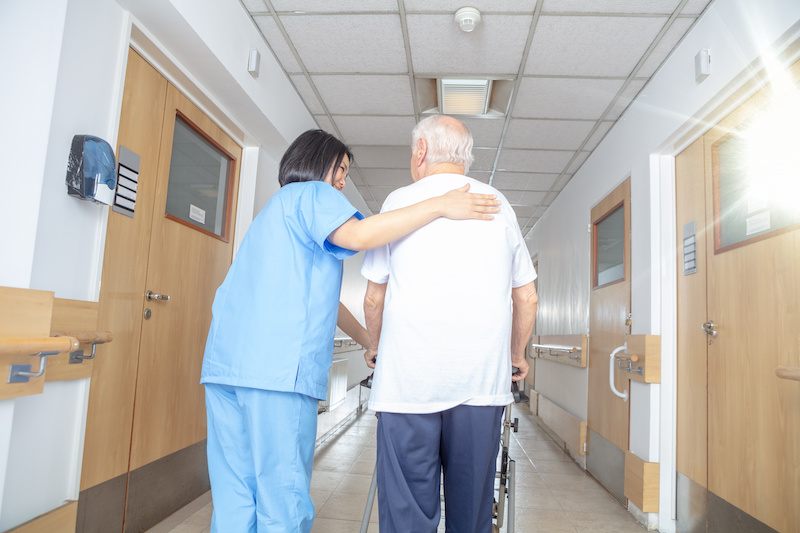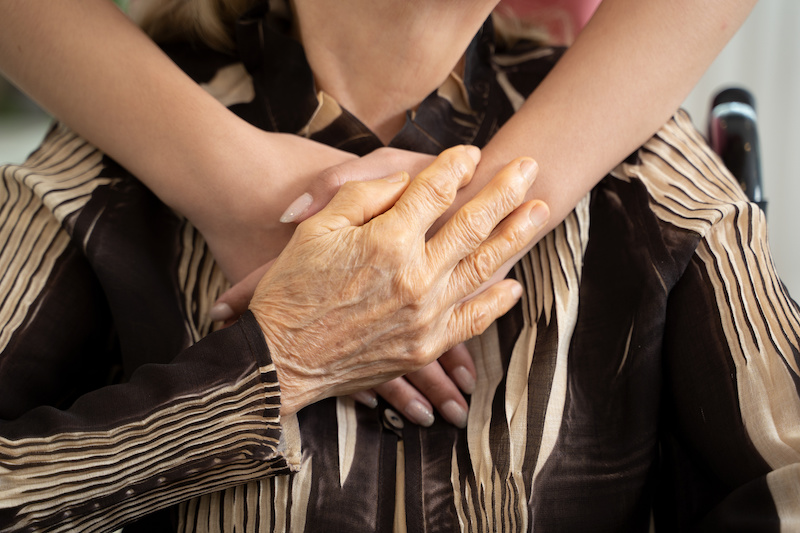Implementing safety tips can be a daunting task.
Truth is, when it comes to ensuring the well-being of our loved ones in senior living facilities, their #1 concern often is…
Their safety.
Many are in the dark as to how to begin. This knowledge gap separates those who merely worry from those who take proactive steps. If you’re unsure about how to create a secure environment for seniors sustainably, you’ll never reach this level of peace and assurance.
Maintaining safety isn’t easy.
We’ll navigate this seemingly simple (but often complex) issue here,
Table of Contents:
- Senior Living Safety Tips: Creating a Secure and Comfortable Environment
- Fall Prevention Strategies: Ensuring Worker Safety
- Fire Safety Tips for Senior Living Facilities
- Security Measures in Assisted Living and Memory Care Facilities
- Emergency Preparedness: A 3-Step Approach
- Mental Health Support: A Key to Safety in Senior Living
- FAQs in Relation to Safety Tips
- Conclusion
Senior Living Safety Tips: Creating a Secure and Comfortable Environment
In senior living facilities, safety is of utmost importance. Recognizing potential risks can contribute to creating a safer environment for seniors.
The need for certified safety professionals and worker safety programs has never been more critical than it is today, especially when dealing with the unique challenges presented by assisted living and memory care environments.

Creating a Safe Environment
The safety of seniors in assisted living and memory care facilities is not just important, it’s essential. This involves crafting an environment that mitigates risks while enhancing comfort and independence.
Fall Prevention: Navigating Physical Hazards
Physical hazards are commonplace in residential settings – poor lighting, slippery floors, or cluttered walkways are prime examples. These seemingly minor issues could lead to serious injuries among older adults due to falls, which have been highlighted as one of the leading causes of injury by the National Safety Council.
To address these concerns effectively, improving workplace safety with protective equipment such as handrails and non-slip mats becomes essential, rather than optional additions. Furthermore, safety professionals can identify any latent dangers through regular comprehensive facility-wide audits.
Fire Safety: Tackling Memory Loss-Related Risks
Cognitive impairments like dementia present their own set of risks within an assisted living setup. Forgetting appliances on or getting disoriented inside the facility are just surface-level problems that might arise.
This necessitates further training for certified safety professionals, ensuring that even younger ones are accustomed to handling such situations. All safety professionals can benefit from workplace safety articles focused on this topic, ensuring the overall well-being of workers.
Emergency Preparedness: Mitigating Social Isolation Dangers
Social isolation poses another significant risk factor beyond physical threats, particularly prevalent among residents suffering from cognitive decline residing within these facilities.
A good idea here would involve devising strategies promoting community engagement through group activities and communal dining options.
Maintaining Hygiene Standards: An Essential Practice
Cleanliness plays a crucial role when it comes to preventing infections among residents – especially those requiring mental health support during their stay in assisted living or memory care facilities. Regular cleaning schedules must, therefore, be maintained along with strict adherence to hygiene protocols like hand washing after assisting each resident or handling food items. CDC’s long-term care guidelines offer detailed instructions on upholding high standards of cleanliness across various facets of senior living environments, thus creating a safer workforce within them.
Now that we’ve touched upon some of the most important aspects regarding safety tips in senior living facilities, let’s examine them in more detail.
Senior living facilities must prioritize safety, creating a safe environment that includes fall prevention measures, fire safety and general emergency preparedness, and elevated hygiene standards.
Fall Prevention Strategies: Ensuring Worker Safety
When considering the safety of seniors in assisted living and memory care facilities, fall prevention becomes a key concern. Creating an atmosphere that supports the well-being of elderly people in assisted living and memory care facilities is just as important as ensuring their safety.
The Role of Non-Slip Flooring & Proper Lighting
In the quest to ensure safety within such facilities, non-slip flooring plays a significant role by offering better grip underfoot, especially in wet areas like bathrooms or kitchens. Moreover, adequate lighting aids visibility, thereby helping prevent accidents caused by poor illumination.
- Installation of suitable non-slip flooring materials across all areas.
- Adequate lighting provision, including hallways, staircases, and communal spaces.
Railings And Support Bars: Aiding Mobility
Mobility support devices such as railings along corridors or support bars near bedsides offer additional stability during movement, significantly reducing the chances of falling incidents inside an assisted living facility.
Furniture Arrangement: An Overlooked Aspect?
Careful furniture arrangement often gets overlooked but is critical to maintaining safe workplaces within senior living facilities. Clutter-free walkways ensure clear paths, aiding mobility without posing tripping hazards.
Fire Safety Tips for Senior Living Facilities
The significance of fire safety in senior living facilities cannot be overstated. A minor spark can rapidly escalate into a hazardous situation, particularly for seniors with mobility or cognitive impairments. Therefore, it’s paramount to adopt proactive measures to prevent fires and ensure resident safety.
1. Equip the Facility with Fire Protection Devices
To improve safety, start by installing smoke detectors and sprinkler systems throughout the facility. These devices serve as early warning mechanisms during potential fire incidents, allowing staff members ample time to safely evacuate residents.
Besides these installations, each floor should have easily accessible fire extinguishers that can help manage smaller fires before they spread uncontrollably. Regular maintenance checks conducted by certified safety professionals are vital in ensuring all these appliances function optimally at all times.
2. Formulate Effective Evacuation Plans
An essential aspect of ensuring safety is developing an effective evacuation plan tailored towards addressing every resident’s needs, especially those who may experience difficulties moving around quickly or suffer from memory-related conditions like Alzheimer’s disease.
This process includes conducting regular drills so everyone becomes familiarized with the actions required when there’s a need for emergency evacuations due to activated fire alarms. OSHA’s Patrick Kapust emphasizes this point extensively among his top 10 workplace safety articles since familiarity breeds success in such situations.
4. Adopt Safe Kitchen Practices
Kitchens pose significant risks because cooking appliances could potentially ignite fires if not used correctly or left unattended. It’s therefore crucial that staff members receive proper training on safe kitchen practices, including never leaving food unattended while cooking and keeping flammable materials away from heat sources.
Fire safety in senior living facilities is a matter of life and death. Ensuring fire protection devices are installed, formulating evacuation plans tailored to residents’ needs, conducting regular drills, adopting safe kitchen practices, and maintaining routine inspections can drastically reduce the risk of fires.
Security Measures in Assisted Living and Memory Care Facilities
The protection of seniors is paramount when it comes to assisted living and memory care facilities. This involves ensuring worker safety, improving workplace safety through the proper usage of protective equipment, and employing controls that assist certified safety professionals in identifying risks.
To create safer workforces within these environments, ongoing education should be provided to staff members. Employees must be taught how to appropriately respond to possible hazards while keeping the living space secure.

Maintaining Safe Workplaces through Staff Training
In order to consistently meet the top 10 workplace standards, regular training sessions should be conducted for all employees working at senior living facilities. These programs focus on providing them with the necessary skills required to maintain a secure environment.
Apart from internal efforts towards enhancing worker safety, external resources such as those provided by the National Safety Council can also offer valuable insights into accident prevention methods suitable for use within senior care settings.
Workplace Safety Protective Equipment: An Essential Component
Suitable protective gear plays an integral role in promoting worker security while efficiently catering to the needs of seniors residing at these facilities. Examples include non-slip shoes or gloves used during mobility assistance tasks.
Certified Safety Professionals often advocate conducting routine audits aimed at evaluating whether appropriate protective tools are being utilized correctly by facility workers.
Risk Identification Controls: The Key To Preventive Action
An effective strategy frequently employed by industry experts includes implementing risk identification systems designed specifically to prioritize the well-being of residents. These systems are capable of detecting possible hazards early enough so that preventive measures can be taken without delay.
Such control mechanisms not only help maintain high levels of security but also contribute significantly towards creating safer office spaces where both caregivers and their charges feel protected against any form of harm.
Ensuring senior safety in assisted living and memory care facilities hinges on robust security measures, continuous staff training, appropriate use of protective gear, and effective risk identification systems. These components work together to foster a secure environment that prioritizes the well-being of both residents and caregivers.
Emergency Preparedness: A 3-Step Approach
The concept of emergency preparedness in senior living facilities might seem overwhelming, but the challenges can be easily addressed with a systematic approach. Here are three steps to ensure optimal safety and security for seniors during emergencies.
1. Implement Comprehensive Evacuation Plans
To start off, ask yourself – how do you navigate through your facility? How would it work if an evacuation is necessary? An effective evacuation plan that prioritizes resident safety forms the backbone of any robust emergency response system.
Certified safety professionals recommend guidelines such as clear exit signage, regular drills involving staff and residents alike, and providing protective equipment where needed. This not only improves workplace safety standards but also ensures worker safety by making them well-prepared for potential crises.
A detailed map showing all possible exits should be displayed prominently throughout your premises so everyone knows exactly where to go when required. Remember – plans must take into account mobility issues or cognitive impairments common among elderly residents.
2. Maintain Updated Emergency Contact Information
In case family members need to be informed promptly about their loved one’s condition during an emergency situation, having up-to-date contact information becomes crucially important. This includes details like names, phone numbers, email addresses, etc., along with special instructions related to individual care requirements if any.
Your database needs both accessibility and privacy protection due to its sensitive nature. Certified Safety Professionals often suggest encrypted digital databases which provide secure yet easy access whenever urgently needed.
3. Incorporate Technology Wisely
Leveraging technology has become an integral part of today’s workplace safety programs across industries, including senior care facilities too. The top ten articles on OSHA stress the importance of automated alerts, mobile devices, and wearable tech designed specifically for elderly users, which could potentially save lives by alerting caregivers promptly when something goes wrong.
However, ensuring these systems are truly beneficial requires more than just training people to use them. Regular checks and updates based on feedback from end-users, i.e., staff members who interact directly with residents, is of the utmost importance to ensure that they are fulfilling their purpose.
Securing senior living facilities during emergencies isn’t rocket science. Just follow a 3-step approach: craft comprehensive evacuation plans, keep updated emergency contact info at your fingertips, and smartly incorporate technology. Remember to consider mobility issues and cognitive impairments when planning.
Mental Health Support: A Key to Safety in Senior Living
When considering safety for seniors living in assisted facilities, mental health support often doesn’t get the attention it deserves. However, this aspect is crucial and plays a significant role in ensuring safety within senior care environments.
1. Recognizing Mental Health Challenges
The first step towards providing effective mental health support is recognizing that aging brings about changes impacting an individual’s emotional state – loss of independence or cognitive decline due to conditions like Alzheimer’s disease are just some examples. Certified safety professionals need to be vigilant about these challenges as neglecting them could lead to anxiety, depression, or even self-harm among residents.
This understanding also forms part of the controls safety professionals identify when conducting regular assessments of resident well-being.
2. Implement Tailored Therapies and Activities
To improve mental well-being, consider implementing various therapeutic activities based on each resident’s needs and preferences such as art therapy sessions or music therapy, which have been shown by numerous studies including those from OSHA’s Patrick Kapust, to positively impact dementia patients.
- Promote social interaction via group activities; not only does this reduce feelings of loneliness, but it also fosters a sense of community amongst residents making them feel more secure.
- Create personalized activity plans focusing on hobbies they enjoy; keeping seniors engaged can help alleviate symptoms associated with cognitive disorders.
- Schedule regular family visits whenever possible; maintaining strong familial ties contributes significantly towards positive psychological well-being.
3. Ensure Open Communication Channels
A good idea put forth by several articles suggests promoting open communication between staff members at all levels ensures signs indicating potential distress are quickly identified, so necessary interventions can be made promptly – another vital component outlined under general requirements for certified healthcare providers according to OSHA’s guidelines. Regular meetings where staff share observations about resident behavior allow everyone involved to stay informed regarding any changes requiring immediate action,
Don’t overlook mental health when ensuring safety in senior living facilities. Recognize the emotional challenges aging brings, implement personalized therapies and activities to improve well-being, and foster open communication among staff for quick identification of distress signs.
FAQs in Relation to Safety Tips
What is the most important safety tip?
The most crucial safety tip is to stay aware of your surroundings and always have a plan for emergencies, whether it’s in senior living facilities or at home.
What is the best safety topic?
Fall prevention stands out as a critical safety topic, especially in senior living environments where falls can lead to serious injuries.
What are 5 personal safety rules?
Five key personal safety rules include staying alert, knowing emergency exits, practicing good hygiene, avoiding risky situations, and maintaining regular communication with loved ones.
Why is safety important in our life?
Safety ensures we avoid harm and injury. It allows us to live confidently without fear of unexpected dangers or health risks.
Conclusion
Senior living safety is a multifaceted issue, demanding our attention and care.
We’ve delved into the potential risks and ways to identify them.
We’ve explored how to create an environment that’s not just comfortable but also secure for seniors in assisted living and memory care facilities.
Fall prevention strategies have been dissected, shining light on effective measures like proper lighting and non-slip flooring.
The importance of fire safety has been underscored with practical tips shared to keep residents safe from fire hazards.
We’ve navigated through security measures ensuring workers are taking extra precautions.
Emergency preparedness was addressed too, emphasizing evacuation plans and emergency contact information.
In the end, mental health support emerged as a crucial aspect of senior safety.
Are you ready now? Are you prepared to bring a positive alteration to your beloved’s life?
It’s time we put these insights into action.
At Courtyard Gardens Senior Living, we prioritize all aspects of senior safety – physical well-being coupled with emotional stability forms our core ethos.
Join us today, and see why every one of our residents experiences an optimal blend of comfortability fused with top-notch security protocols designed specifically for seniors.


